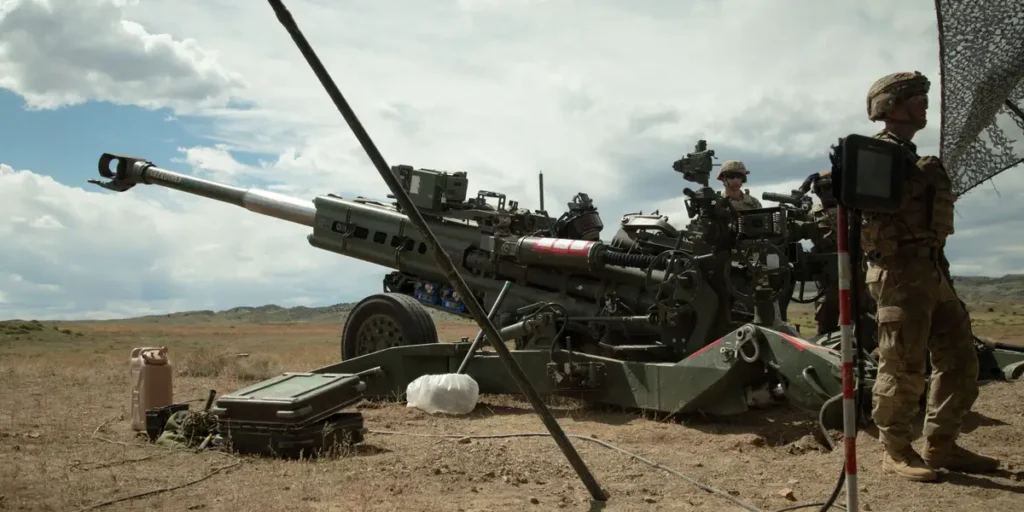US Army soldiers at Fort Carson have been experimenting with a new command and control system that promises to fuse weapons, surveillance drones, and AI into a networked war machine.
The Next Generation Command and Control system, NGC2, is intended as a substantial upgrade over the current system and is all about readying the Army for a challenging potential future fight against a technologically sophisticated enemy.
The Army says command and control needs to be modernized “for large-scale combat operations against near-peer adversaries.” The service’s Program Executive Office Command, Control, Communications, and Network argues the “current mission command systems are not mobile, intuitive, or survivable enough to easily overcome the current threat, changes in the character of warfare, and the pace of technology.”
That’s where NGC2 comes into play.
Last week, the Army wrapped its second Ivy Sting exercise testing and expanding how soldiers use the new NGC2. While the first round was focused on the basics, the latest event was notably more complicated.
“Now, we’ve increased the complexity,” Maj. Gen. Patrick Ellis, the commanding general of the Army’s 4th Infantry Division, told reporters during a media roundtable. Testing saw the Army connect multiple artillery pieces to more data sources.
The Army’s current command and control systems — networks used for coordinating combat action, from communications to the employment of troops and weapons — are often standalone systems inconsistent across the service. The Army is now on a mission to standardize command and control across the service.
US Army photo by Pvt. Jacob Cruz
Moving away from the increasingly obsolete legacy command and control systems and processes to NGC2, the Army says, allows soldiers to move faster in battle. During Ivy Sting 1, soldiers got an M777 Howitzer connected to command for fire control decisions up and running as soon as the gun was in place. In the past, that might’ve taken over an hour.
During the second round of testing, they placed three artillery pieces and connected them in about 10 minutes or less. Lt. Col. Dana Lafarier, division artillery battalion commander of the 2nd Battalion, 77th Artillery Regiment, said soldiers are also dispersing guns, supported by improved command and control, to further increase survivability. Having artillery spread across different locations means an enemy would have a more difficult time taking them all out.
“All of this,” Lafarier explained, “reduces the soldiers’ cognitive load. So they’re not thinking about how to set up and/or troubleshoot legacy equipment. They’re actually thinking about their job and task at hand.”
Ivy Sting 2 included six command and control nodes, or systems where commanders can make decisions and control fires and other weapons from.
During testing, drones conducted target and battle damage assessments, with mid-range reconnaissance drones flying for about 30-40 minutes per flight, with wind and other environmental conditions impacting usability.
Ellis said that the drone feeds are easily integrated into NGC2. Once a drone connects, the feeds are transferred to the cloud, and from there, artificial intelligence models can help speed up target identification.
US Army photo by Pvt. Jacob Cruz
“It’s an ISR [intelligence, surveillance, and reconnaissance] feed that comes back, and the AI model is helping comb through that,” he explained. As more and more feeds come in, the AI will help speed up the targeting process. Officials said they’re fine-tuning the AI for terrain and environmental factors. The Army intends to explore this more in future exercises.
Adding more drones at greater ranges, the Army is looking to “kind of stress the system a bit more,” Ellis said, adding that drones have “really enabled us to kind of adjust our targeting process.”
NGC2 marks a departure from how the Army used to conduct command and control and the technologies it has long relied on. It’s more focused on software-based systems and large amounts of data that can be accessed quickly for faster decision-making.
This past July, Anduril and a team of vendors that included Palantir won the nearly $100 million contract for NGC2, and since then, industry partners and the service have built a prototype with the Army’s 4th Infantry Division at Fort Carson. Future Ivy Sting exercises will continue to increase the complexity of testing with NGC2 before culminating in a large exercise in May 2026. Command and control has to be ready for real combat, which involves many systems working together.
Army officials said the testing is revealing what they would like to improve upon with NGC2, including airspace deconfliction, more data and computing power, and more AI integration. Next year, they’ll incorporate contested electromagnetic environments, with the testing in May replicating enemy capabilities in cyber and electronic warfare.
The iterative design process also incorporates soldier feedback. “The soldiers here in the 4th Infantry Division are really excited about this,” Ellis shared. “It’s an opportunity for them to shape the future of the Army.”


